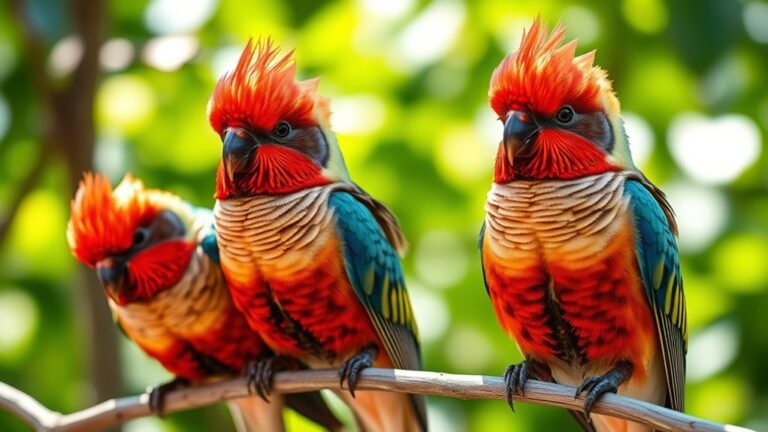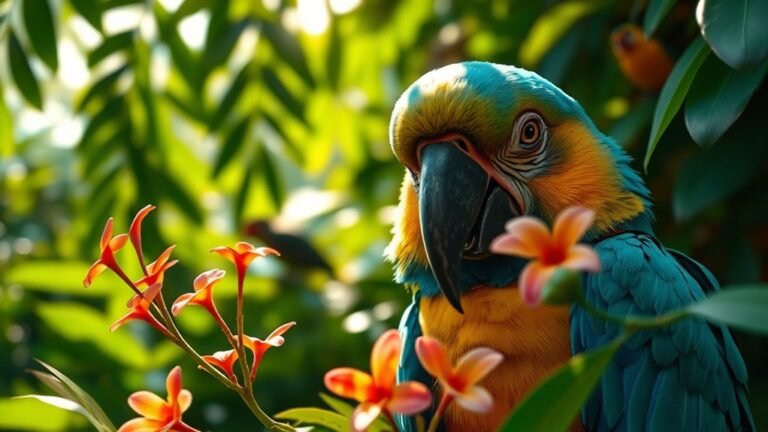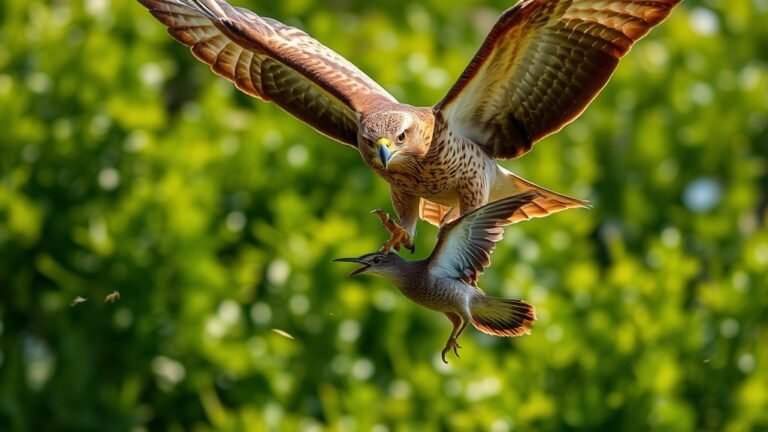Osprey Vs Eagle: Key Characteristics Compared
Ospreys and eagles are both interesting birds that live in different places and have unique traits. Let's look at some of their key differences.
First, ospreys are known for their special hunting skills. They mostly eat fish and dive into the water to catch them. Their long wings help them fly quickly and easily. Eagles, on the other hand, eat a variety of animals. They are strong and can hunt larger prey like rabbits, squirrels, and even other birds.
Next, let's talk about their nests. Ospreys build large nests near water, often on tall trees or poles. They use sticks and other materials to make a safe home for their young ones. Eagles also build big nests, but they are usually higher up and can be found on cliffs or tall trees.
When it comes to size, eagles are generally bigger than ospreys. An eagle's wingspan can reach up to eight feet, while ospreys typically have a wingspan of around five and a half feet. This size difference helps eagles soar high in the sky and hunt from a distance.
Both birds are important in nature. Ospreys help control fish populations, while eagles keep other animal numbers in check. They each play their part in keeping the ecosystem balanced.
As we learn more about ospreys and eagles, we can see how their unique traits help them survive and thrive in their environments. Each bird is special in its own way, contributing to the beauty of nature.
A Quick Overview
Ospreys and eagles are both amazing birds, but they have some key differences that make them unique.
First, let's talk about their wingspans. Ospreys have wings that stretch between 5 to 6 feet. Eagles, on the other hand, have larger wingspans of 6 to 8 feet. This helps eagles move around more easily in the sky.
When it comes to food, ospreys mainly eat fish. They have special talons that help them catch their slippery meals. Eagles have a wider variety of food. They eat fish, small animals, and even leftover food from other animals.
Now, let's look at their nests. Ospreys like to build big nests close to water. Eagles prefer to make strong nests in tall trees or on cliffs. Their nests can grow bigger over time!
In winter, ospreys migrate thousands of miles to find warmer places. Many eagles, however, stay in their homes all year unless they really need to move because of the weather.
Finally, it's good to know that osprey numbers are going up. Sadly, some eagle types, like golden eagles, are having a tough time because of losing their homes and hunting.
So, whether flying high or catching a meal, ospreys and eagles both play important roles in nature!
Physical Appearance

When you look at an osprey and an eagle, you can see many differences in how they look.
First, let's talk about their beaks. The osprey has a long, curved beak that helps it catch fish. The eagle has a strong, wide beak that's great for ripping apart meat.
Next, check out their eyes. Ospreys usually have bright yellow eyes that pop against their white and dark feathers. Eagles have darker eyes that can be yellow or brown, depending on the type of eagle.
These differences in beak shape and eye color help each bird hunt better and survive in their own special environments.
Wingspan Comparison

Ospreys and eagles look different, and their wingspan shows how each bird is built for its job. Ospreys have a wingspan of 5 to 6 feet. This size helps them move quickly and catch fish.
Eagles have a bigger wingspan, usually between 6 to 8 feet. Their large wings help them fly high and travel far.
These wingspans show where each bird lives and what they do. Ospreys like to be near water because they need to be quick to catch their meals. Eagles can hunt in many places using their long wings.
Knowing about their wingspans helps us appreciate how these amazing birds survive and succeed in nature. Each wingspan is a special tool that helps birds in different ways.
Plumage Differences

Ospreys and eagles have different feather colors and patterns that help them live in their own special places.
These differences make them look unique and help them survive better.
Let's look at some key points:
- Color Differences: Ospreys have mostly brown and white feathers. This helps them blend in near water. Eagles have striking golden heads and dark brown bodies that stand out.
- Changing Feathers: Both birds lose and grow new feathers at different times of the year. This is called molting.
- Young Birds: Baby ospreys have brown feathers that help them stay hidden. In contrast, baby eagles have bright patterns that make them stand out more.
- Courtship Colors: Male ospreys and eagles show bright colors when trying to attract a mate. This helps them show they're strong and healthy.
Learning about these feather differences helps us appreciate how each bird fits into nature.
Hunting Techniques
Ospreys and eagles hunt in different ways because of their feathers and skills.
Ospreys are good at sneaky hunting. They fly low over water and look for fish. Their dark feathers help them blend in, so fish don't see them coming. When they spot a fish, they dive down quickly to catch it.
Eagles, on the other hand, have a different style. They fly high in the sky and can see a long distance. They look for movements from far away. When they spot something, they swoop down fast to grab larger animals or birds.
Both birds are great hunters, but ospreys are careful and steady. Eagles are quick and take advantage of opportunities.
Learning about how they hunt shows us how each bird is skilled in its own environment.
Diet and Feeding Habits
Ospreys and eagles have different diets, which show how they hunt and live in their environments.
Let's look at what they eat and how they get their food:
- Ospreys eat mainly fish. They catch fish by diving down from high up in the air.
- Eagles have a wider diet. They eat fish, small animals, and sometimes dead animals.
- Ospreys have special talons that help them hold onto slippery fish.
- Eagles use their strong beaks and great eyesight to find and catch a variety of food.
Learning about what these birds eat helps us understand how they fit into nature.
It shows us how they survive in different places.
Both ospreys and eagles are interesting birds with unique hunting skills!
Nesting Behaviors
Ospreys and eagles both have their own special ways of building nests. These differences show how each bird adapts to where they live.
Ospreys like to build their nests close to water. They usually pick spots high above the water so they can easily catch fish. They make their nests using sticks, grasses, and other plants. Their nests are big and bulky.
On the other hand, eagles prefer to build their nests in tall trees or on cliffs. They use stronger materials, like bigger branches and even some trash. Eagle nests tend to be really big and can be used for many years.
Over time, these nests can grow larger and larger.
These different nesting habits help ospreys and eagles meet their needs. Ospreys focus on being near water for food, while eagles focus on safety and height. Both birds show how they use their surroundings to thrive.
Habitat Preferences
Nesting behaviors are closely linked to where ospreys and eagles like to live. Each bird has its own favorite spots.
Ospreys prefer specific places, like:
- River habitats: They love freshwater areas where they can find lots of fish.
- Coastal habitats: You can often see ospreys near oceans or estuaries because there are plenty of fish there.
- Nesting structures: They look for tall trees, cliffs, or even man-made platforms to build their nests.
- Proximity to water: Ospreys need to be close to water to hunt easily.
Eagles, on the other hand, have a wider range of homes. They also like rivers and coastal areas, but they can live in forests and mountains too.
Knowing where these birds prefer to stay helps us understand their roles in nature.
Both ospreys and eagles play important parts in their ecosystems, and it's interesting to see how their habits match their environments!
Migration Patterns
Ospreys and eagles have different ways of moving around during the seasons. Ospreys travel a long way when it's time to migrate. They can fly thousands of miles from their homes to find warmer places for winter. They often choose to follow coastlines and rivers. This helps them catch fish, their favorite food.
On the other hand, many eagles stay in the same place all year if the weather is nice. They don't always migrate like ospreys. But some eagles, like golden eagles, do move when they need to. They prefer to fly over mountains and open areas. This shows how well they can adjust to different surroundings.
Knowing about these movement patterns helps us understand how ospreys and eagles live and survive. It also tells us about their important roles in nature.
Vocalizations and Calls
Birds like ospreys and eagles use sounds to talk to each other. Their calls are different and show off their unique personalities and homes. Here's how they differ:
- Osprey Calls: Ospreys make high-pitched, whistling sounds. They use these calls mostly when they're nesting and to keep in touch with their partners.
- Eagle Calls: Eagles make sharp, chattering noises. These sounds help them show their territory and let their chicks know if there's danger.
- Different Situations: Both ospreys and eagles change their calls based on what's happening around them, like during mating or if they sense a threat.
- Learning from Parents: Young ospreys and eagles learn how to call from their parents. This helps them fit into their social groups.
Knowing how these birds communicate can help you appreciate them more. Their calls show us how smart and social they are!
Lifespan and Reproduction
Ospreys and eagles are fascinating birds. Their lives and how they raise their young teach us a lot about them. Ospreys usually live for about 7 to 10 years, while eagles can live more than 20 years.
Both birds have special ways of finding mates. Ospreys often mate for life and do fun courtship flights. Eagles also pair up for a long time, but their courtship isn't as flashy.
When it comes to raising chicks, ospreys usually have 1 to 3 chicks each season. Eagles can have 1 to 4.
These details show how each kind has adapted to survive in different places. Understanding these things helps us appreciate how these amazing birds live and grow.
Conservation Status
Ospreys and eagles are both amazing birds, but their conservation statuses are quite different.
Here's a simple look at how they're doing today:
- Osprey: Ospreys aren't in danger. Their numbers are growing again because of successful efforts to protect them.
- Bald Eagle: Bald eagles were once in danger, but now they're doing well. Thanks to protection and habitat restoration, they're no longer listed as endangered.
- Golden Eagle: Golden eagles still face problems in some areas. They're a species of concern because they deal with habitat loss and hunting.
- Sea Eagles: Some sea eagle species are in serious trouble. They're critically endangered due to habitat destruction and pollution.
Supporting conservation efforts is crucial.
We can help these beautiful birds live and thrive in our environment, and that helps us connect with nature too!
Cultural Significance
Birds of prey, like ospreys and eagles, are important in many cultures. They stand for strength, freedom, and clear vision. People see ospreys as symbols of resilience, while eagles represent power and nobility.
Many cultures honor these birds. They're part of stories and traditions. For example, in ancient Egypt, the goddess Ma'at was linked to the eagle. This shows how these birds acted as messengers for the gods.
You can find ospreys and eagles in art too. Artists paint them, make sculptures, and create crafts that show their beauty. Their images inspire feelings of awe and connection to nature.
These birds also appear in books and movies, helping us feel a part of the natural world. Ospreys and eagles reflect both their roles in the ecosystem and our shared stories. They connect us with the world around us, making them special in our lives.
Observation Tips for Birdwatchers
When you're outside looking for ospreys and eagles, watching how they act and where they live can make your birdwatching even better.
Here are some easy tips:
- Binocular Tips: Adjust your binoculars before you go. Learn how to focus them quickly for clear images.
- Observation Techniques: Stay quiet and move slowly so you don't scare the birds away.
- Know Their Habitats: Look for ospreys near water and eagles in mountains.
- Time Your Visits: Early morning and late afternoon are the best times to see these beautiful birds. They're more active during these times.
Have fun watching!
Frequently Asked Questions
How Do Osprey and Eagles Differ in Their Social Structures?
Eagles are known for making strong pair bonds. This means they often find a partner and stay together for a long time. They also like to reuse the same nests year after year. This helps them raise their young in a familiar place.
Ospreys are a bit different. They build nests, but they often nest in smaller groups. They like to communicate with each other, which helps them build friendships. This bonding is important for their social life.
What Are the Primary Threats to Osprey and Eagle Populations?
Habitat destruction and pollution are big problems for ospreys and eagles. These threats hurt their homes and food sources. When their nests disappear, and their environment gets dirty, their health suffers. This leads to fewer birds. Protecting their habitats is key to keeping their populations strong.
How Do Climate Changes Impact Ospreys and Eagles Differently?
Climate change affects ospreys and eagles in different ways. Ospreys have a tough time because they depend on water. When water levels change, it makes it harder for them to find places to nest and hunt for food.
Eagles, on the other hand, face problems with finding enough prey to eat. As the climate changes, some of their favorite foods might disappear or become harder to catch. This can make it tricky for them to survive in their habitats.
Both birds need to adapt to these changes, but they do so in their own ways. By understanding how climate change impacts them, we can help protect their habitats and ensure they have what they need to thrive.
Are There Any Notable Myths or Legends Surrounding Ospreys or Eagles?
Ospreys and eagles are special birds in many cultures. People often look at them as symbols of power and freedom. They remind us of nature's beauty and strength. Many stories surround these birds, making them important in myths and legends.
For example, some Native American cultures see the eagle as a messenger. They believe it carries wishes and prayers to the sky. In other tales, ospreys are seen as wise and good at hunting. These stories connect people to nature and show how much we admire these incredible birds.
What Research Methods Are Used to Study Osprey and Eagle Behavior?
Researchers study osprey and eagle behavior by watching how they act and using technology to track them. They look at things like what these birds eat, where they go during migration, and how they interact with each other. This helps us learn more about these amazing birds.
Watching them in their natural habitats gives scientists clear information. They can see when and how these birds hunt for food. Using tracking devices, they can follow their travels over long distances.
This mix of watching and tracking helps us understand the daily lives of ospreys and eagles better. By learning more, we can work to protect these birds and their habitats.

Luna is the passionate founder and author of Birds and You, a website dedicated to sharing her love for birds with fellow enthusiasts. Through her engaging articles and guides, she aims to educate and inspire others to explore the fascinating world of birds. When she’s not writing, you can find Luna observing birds in their natural habitats or sharing beautiful bird photography on Pinterest. Join her on this journey to celebrate and protect our feathered friends!







